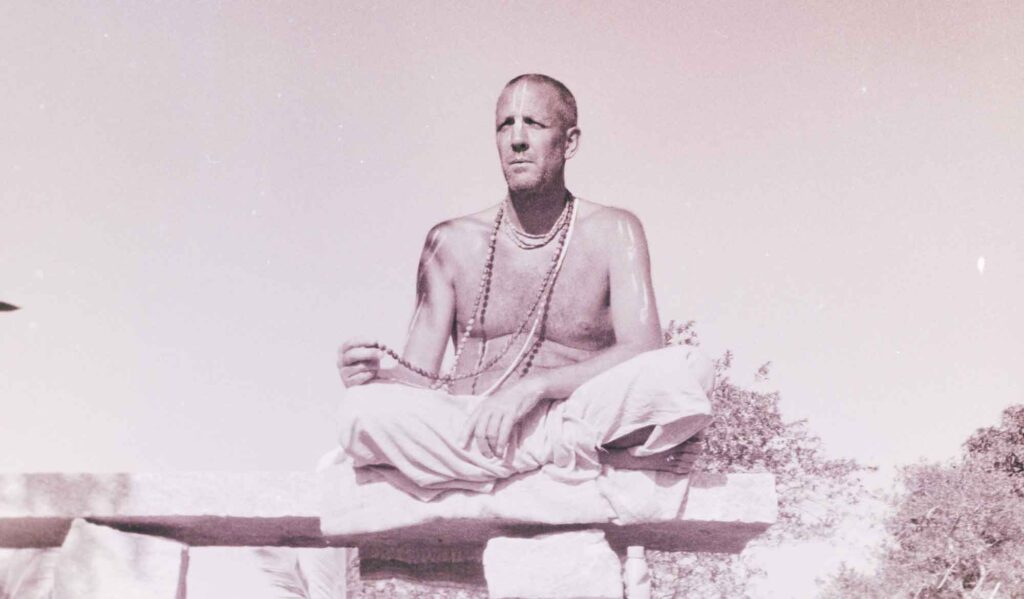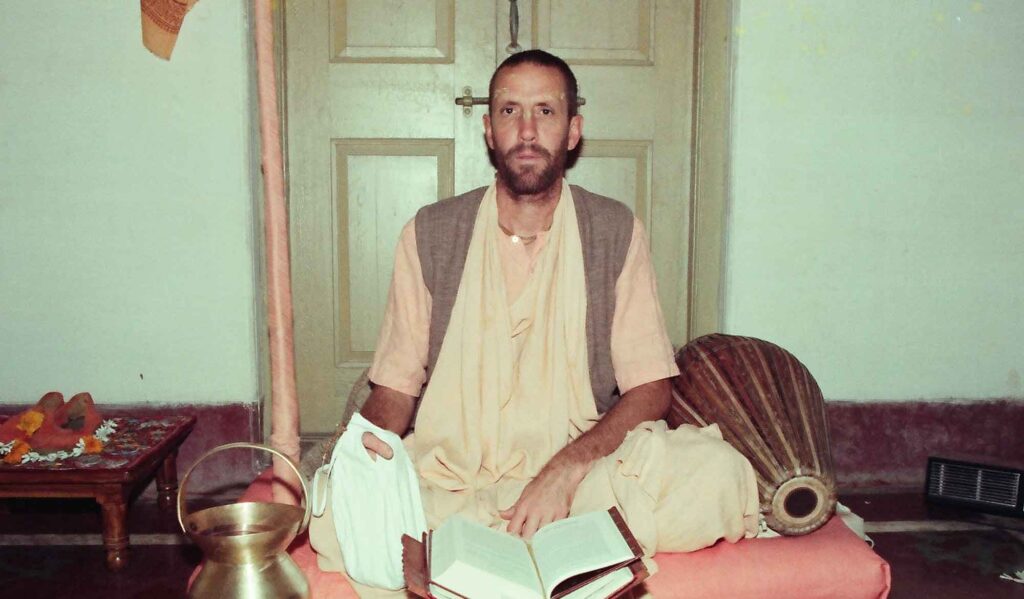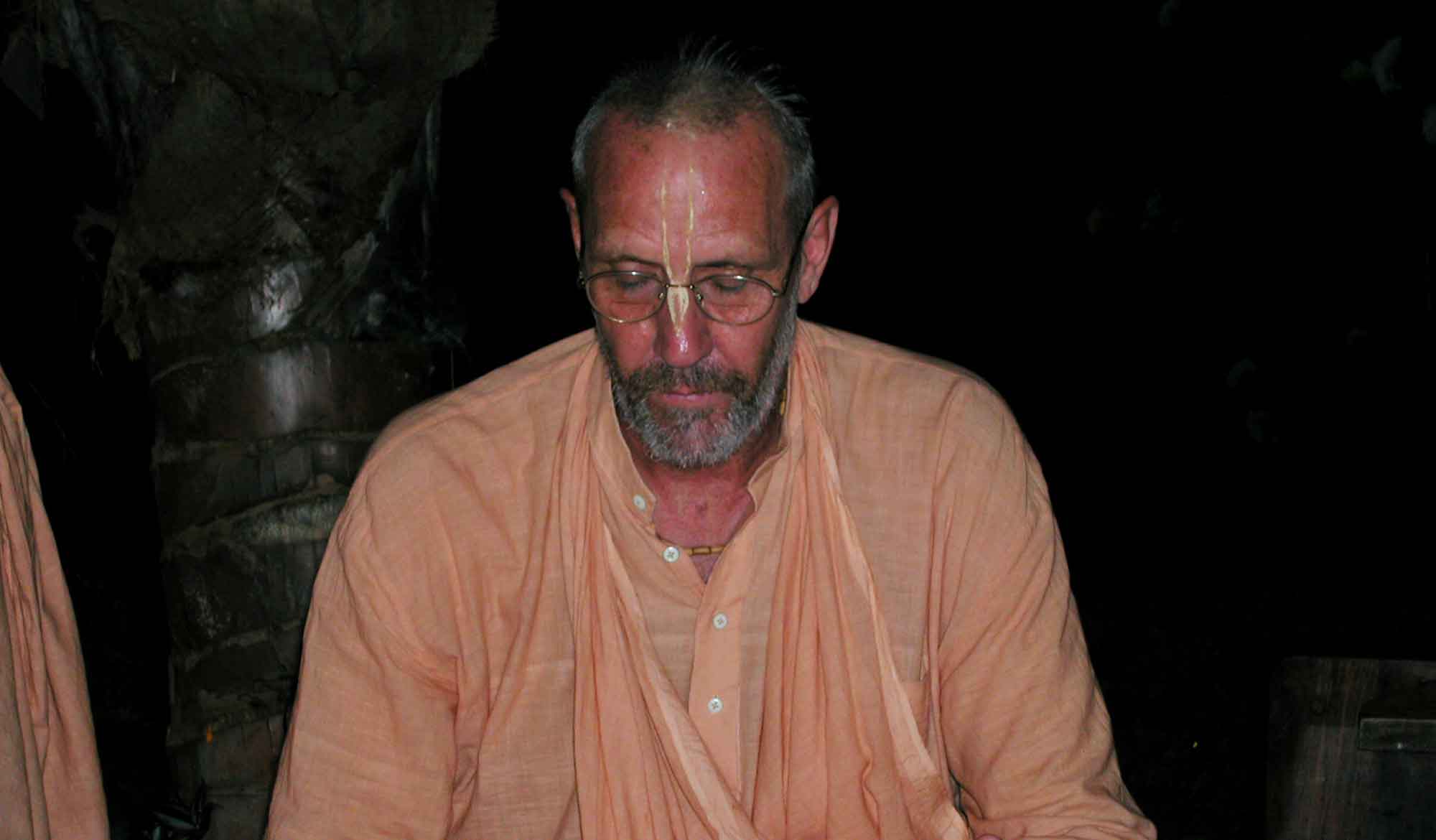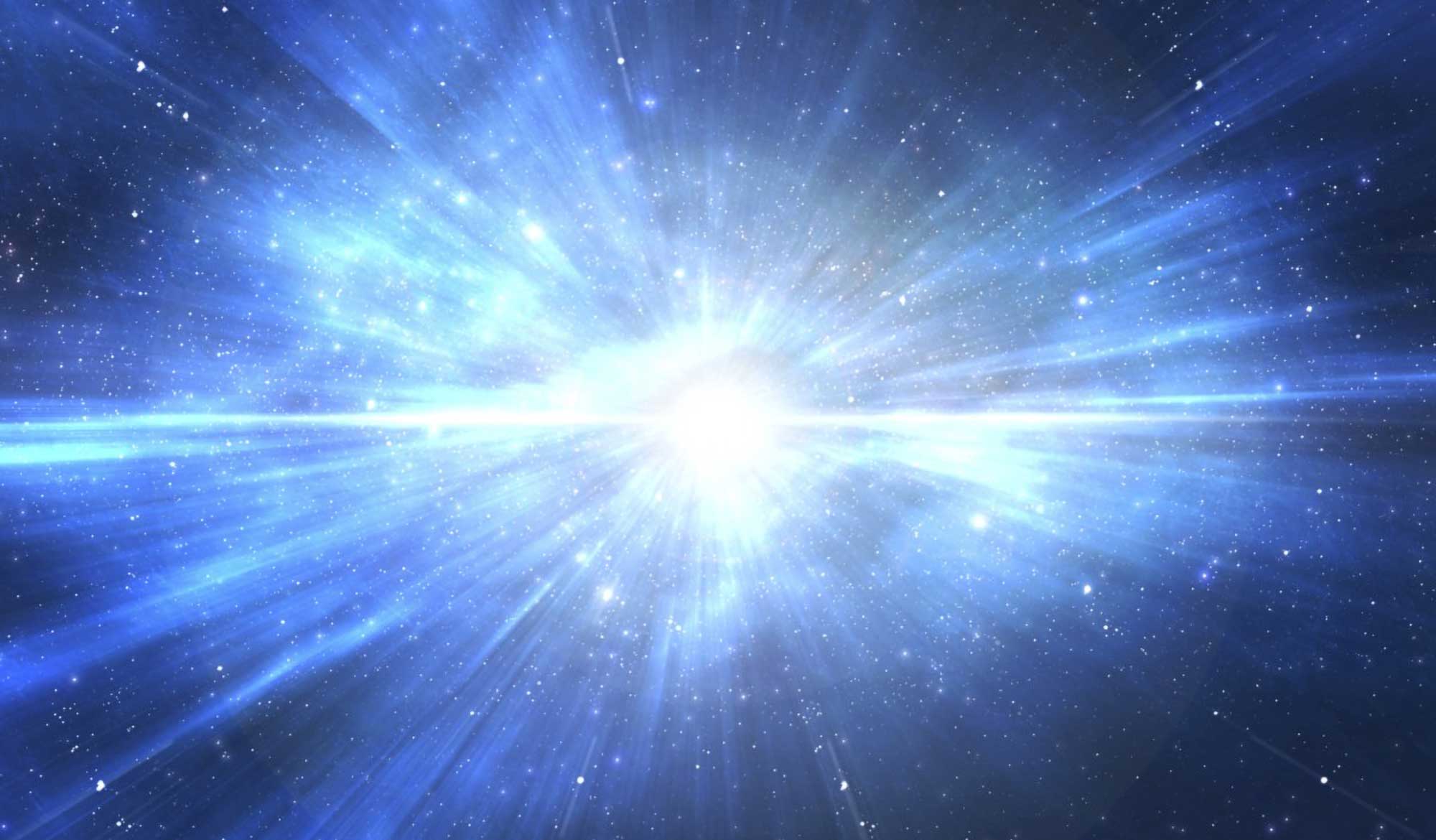by Swami B.G. Narasingha
“Dīkṣa Names and Feelings of the Heart” was written by Śrīla Narasiṅgha Mahārāja in January 1998 for VNN. Narasiṅgha Mahārāja answers the question that many ask in regards to śikṣā-gurus and “name changes” amongst previously initated devotees.
It is sometimes suggested that the ‘heart’ is the most reliable instrument to measure the plane of Divinity. This statement can certainly be taken as true, provided the heart is not troubled by anarthas (such as envy, lust, anger, and greed etc.).
The sentiments (love, affection, attachment and so forth) that are sometimes expressed for guru and the name he has given us at the time of hari-nāma-dīkṣā are undoubtedly feelings from the heart. Seeing that another godbrother or devotee has received a name change after coming in contact with a śikṣā-guru sometimes causes trouble in our mind and creates a strange feeling in our heart also. We may feel that, “Why has his name changed? Śrīla Prabhupāda gave him that name, so what is the use of giving another name?” This manner of thinking and feeling in the heart is certainly understandable, yet we might be wrong.
We may feel that it is wrong, but indeed it may be right. While still conditioned by material nature even our own heart might lie to us – our own heart may cheat us! Therefore, as far as possible we should try to understand spiritual subject matters regarding our feelings toward our guru and the feelings that others have toward their guru from the standpoint of śāstra, sādhu and guru. These three will not cheat us!
Guru, sādhu, and śāstra agree that vaidhi-bhakti (if practiced without offense) will purify the heart of all unwanted dirty things. After the stage of anartha-nivṛtti (purification of the heart) is achieved one comes to the stage of niṣṭhā (fixed-up). Then ruci (a sweet taste for the truth) is established in the heart and then the stage of asakti (real attachment for the goal of our life) and then the stage of bhāva (the dawn of the hearts pure sentiment in love of Kṛṣṇa) is achieved. The feelings of bhāva (heart-felt sentiments) are considered by great saints, devotees and the śāstra to be free from mundane influence. Still in the case of Bharata Mahārāja, he fell down (to mundane feelings) even after reaching the stage of bhāva. So one must not stop even there (bhāva). Mahāprabhu has said, prema pumārtho mahān. Love of Kṛṣṇa (prema) is the fifth and ultimate goal of life – the be-all and end-all of existence.
The sentiments generally expressed by neophyte devotees toward their guru are almost always ruled by mundane consciousness – not by bhāva. One may argue – but my guru saved me from this material life and that is my sentiment. Yes, that is true but we are not for mukti-bhāva either. We are for śuddha-bhakti (pure devotion) and thus when our real sentiment awakes for Śrī Guru (from a purified heart) it will awaken in relation to the sentiments (sthāyī-bhāvas) of neutrality, servitude, friendship, paternal, or conjugal love depending on the subjective (aprākṛta/transcendental) plane of Śrī Guru in rasa connection with Kṛṣṇa. Simply to appreciate Śrī Guru from the objective (prākṛta/mundane) world of this temporary reality is dangerous. Those who do are all too often found to commit aparādha to other Vaiṣṇavas. Due to their mundane vision of Śrī Guru they tend to project material differences between elevated souls (dīkṣā and śikṣā-gurus).
We have mentioned here ‘bhāva’ several times. No doubt ‘bhāva’ has become a buzz word. Nonetheless the science of bhakti cannot be changed just because a certain section of devotees are slow to catch up with the subject. As the readers may know, there are three classifications of bhakti: namely prema-bhakti, bhāva-bhakti and sādhana-bhakti. Each of these stages has further divisions.
Prema-bhakti has two main divisions namely vaikuṇṭha-prema and goloka-prema. Goloka–prema further unfolds as sneha, mana, praṇaya, rāga, anurāga, bhāva, and mahābhāva. (See Bhakti-rasāmṛta-sindhu and Ujjvala-nīlamaṇi) Unfortunately, in our contemporary times, prema–bhakti is more or less considered to be a myth.
Bhāva-bhakti has five primary divisions and seven secondary divisions. Śānta-rati, dāsya-rati, sakhya-rati, vātsalya-rati, and mādhura-rati are primary. Hāsya, karuṇa, raudra, vīra, bhayānaka, bībhatsa, and adbhuta are the seven secondary divisions. (See Bhakti-rasāmṛta-sindhu, and Mādhurya-kadambinī) However, bhāva-bhakti is now synonymous with sahajiyāism by those who do not understand the science of devotion, and anyone mentioning “gopī-bhāva” is subject to a ‘witch hunt.’
Sādhana-bhakti has two main divisions namely vaidhi-bhakti and rāgānuga-bhakti. Unfortunately rāgānuga-bhakti has been labelled a sin and vaidhi-bhakti has been shot in the foot with the gun of Vaiṣṇava aparādha, which has duplicity, malice, hatred, envy, foolishness and mundane sentiments as its six bullets. Thus, from the very beginning (vaidhi-bhakti), if one has unfortunately sustained such ‘bullet wounds.’ there will be no progress in pure devotional service.
As a result of having committed Vaiṣṇava aparādha, we find that rather than advancing in Kṛṣṇa consciousness and being absorbed in pure devotional service with the aim of perfecting this human form of life, one becomes absorbed in increasing the anarthas. Because one does not become absorbed in pure devotional service (rāgānuga-bhakti), the devotee who carries the weight of offenses becomes absorbed in mundane academia, speculating on the nature of the Absolute Truth, worshiping crystals, practicing reiki; astrology, ghost-busting, hunting for druids, looking for spaceships, alien beings, and preparing for the ‘Big War’ (Doomsday Hare Kṛṣṇas). They do this in all earnestness while they chant “Hare Kṛṣṇa.’ But where does that leave such devotees? Answer – in need of higher association. Unfortunately, when that association comes, we think it is an alien being and we attack it. This is what Śrīla Prabhupāda used to call “most unfortunate.”
Agrahya Prabhu has mentioned in his article ‘Diksa Names’ that, “Everything is in Śrīla Prabhupāda’s books.” This, of course, is a favourite saying amongst the devotees. But is the explanation of why Śrīmatī Rādhārāṇī is not directly mentioned in Śrīmad Bhāgavatam given in Śrīla Prabhupāda’s books? No, it is not. So what does it really mean, “Everything is in Śrīla Prabhupāda’s books”? Everything is in OṀ (A,U,M.) but how to extract it? Everything is in the mahā-mantra, but still the guru gives brahma-gāyatrī, guru-gāyatrī, gaura-gāyatrī, gopāla-mantra, kāma-gāyatrī and even sannyāsa-mantra – which is a rāga-mārga/gopī-bhāva-mantra.
Similarly, the Garuḍa Purāṇa says in the verse, artho yaṃ brahma-sūtrānām….that the meaning of brahma-gāyatrī is given in Śrīmad Bhagavatam. But how to draw out the meaning of brahma-gāyatrī from the samādhi of Vyāsadeva (Śrīmad Bhāgavatam)? That is the difficulty – that is, unless one has a śikṣā-guru. If Śrīla Prabhupāda had not known that a disciple could eventually need association and instruction from a śikṣā-guru, he would not have taken the trouble to explain verses such as Cc. Ādi 1.34-35. Why has Śrīla Prabhupāda so diligently explained the necessity of both dīkṣā and śikṣā-gurus in his books if such things were superfluous? If these things have no relevance for his disciples he would have simply written, “I am the only way the truth and the light. No one goes to Kṛṣṇa except by me.”
Unfortunately, the acceptance of a śikṣā-guru has been labelled by many as prostitution. Again I say that the śāstra, our ācāryas and the pure Vaiṣṇavas are not bound to ditto this misconception. Returning to the old saying “Everything is in Śrīla Prabhupāda’s books” I would suggest that the critics of the śikṣā-guru would do well to study more closely the teachings (books) of Śrīla Prabhupāda and try to get beyond the fact that his divine eminence is no excuse for your neglecting our own necessity or the arrangement of Kṛṣṇa for that matter.
There are examples of accepting śikṣā from other than one’s dīkṣā-guru and even having one’s name changed. Yes, even after accepting a highly qualified dīkṣā-guru (who also gave perfect śikṣā) the disciple may only reach perfection after coming under the shelter of a śikṣā-guru. One such case is that of Duḥkhi Kṛṣṇa Dāsa, a disciple of Hṛdaya Caitanya, who after coming to Vṛndāvana took shelter of Jīva Gosvāmī. In time, Duḥkhi Kṛṣṇa Dāsa was taken into the camp of mādhurya-rasa and Jīva Gosvāmī changed his name to Śyāmānanda Prabhu. The details of this story are very sweet and revealing, but space does not permit us that luxury here.
One should not think one’s self above the instruction of a śikṣā-guru. Also, one should not discriminate between the śikṣā-guru and the dīkṣā-guru, otherwise one commits an offense. (Kavirāja Gosvāmī and Śrīla Prabhupāda have explained this matter in significant detail in Cc, Ādi-līlā, 1.35)
In Śrīla Prabhupāda’s famous speech before the members of the Gauḍīya Maṭha (Bombay), printed in almost every ISKCON Vyāsa-pūjā book, there is an excellent example of the proper vision one should have of Śrī Guru – free from mundane conception. Śrīla Prabhupāda says, “Guru is one not two….there can be no difference between your guru and mine. …Guru is appearing in many forms.”
Our conclusion regarding the “name change” issue is that if the śikṣā-guru changes the disciples name this is considered to have been done directly by Kṛṣṇa Himself as there is no difference between the dīkṣā-guru and the śikṣā-guru – both are equal manifestations of Kṛṣṇa. Only our purified heart’s sentiment will confirm this but in the meantime we can accept this as true based on śāstra, sādhu, and guru.
More Articles by Swami B.G. Narasingha
The Sacred River Sindhu/Indus
‘The Sacred River Sindhu/Indus’ was posted by Swami B.G. Narasingha on his blog, narasingha.net, on October 2nd, 2011. In this short article, Narasingha Maharaja explains the significance of the River Sindhu and his pilgrimage to it. This article was later expanded into a bigger article called ‘Sindhu River – How India Got Her Name.’
Instructing the Guru
This article “Instructing the Guru” was written in April 2018 by Śrīla Narasingha Mahārāja who answers a question concerning a previous article wherein a Vaiṣṇavī writes a letter to her dīkṣā-guru and explains to him about the importance of śikṣā. In response, a question was raised by a devotee about the etiquette of a disciple instructing her guru.
The Atomic Ray – From Uniform Consciousness to Individual Conscious Units
In “The Atomic Ray - From Uniform Consciousness to Individual Conscious Units” written in 1996 Śrīla Narasiṅgha Mahārāja discusses the constitutional position of the jīva, according to Bhaktivinoda Ṭhākura and Śrī Caitanya-caritāmṛta.













